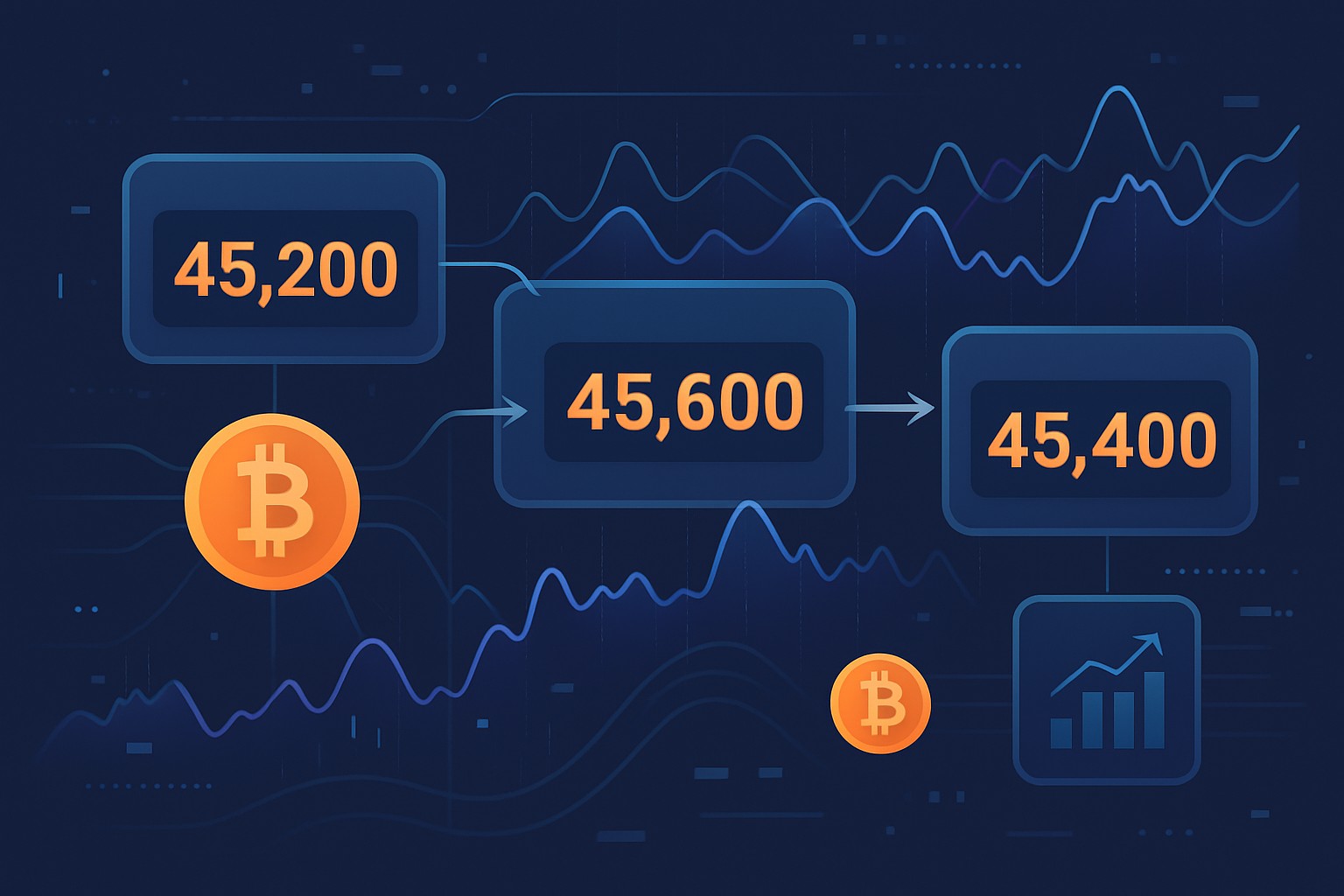Crypto arbitrage opportunities and how they work?


Crypto arbitrage opportunities keep drawing in traders eager to cash in on price gaps for cryptocurrencies across various exchanges. Arbitrage means buying a cryptocurrency at a bargain on one platform and selling it for a bit more on another at nearly the same time. This article will walk you through the basics of crypto arbitrage and explain why these chances pop up. It will lay out common strategies, guide you step-by-step through the process, and point out key risks and handy tools you will want to keep on your radar.
What Exactly Are Crypto Arbitrage Opportunities All About?
Crypto arbitrage kicks in when the price of a cryptocurrency isn’t quite in sync across different exchanges at the very same moment. This creates a neat little opportunity for traders to snag the asset on one platform at a bargain and then flip it instantly on another for a tidy profit—kind of like spotting a garage sale deal and turning around to sell it to your neighbor for a bit more.
- Arbitrage is all about seizing those little price quirks for the same asset across different markets—like finding a sweet deal when nobody’s looking.
- These price gaps pop up because cryptocurrency exchanges operate independently and each dances to its own tune of supply and demand.
- Market inefficiencies often throw brief golden opportunities to snag a profit your way.
- Every exchange has its own crowd and liquidity flow which naturally puts a unique spin on prices.
- Timing is everything here since these price differences can disappear in the blink of an eye.
- Whether you walk away with profits depends on several factors—transaction costs, timing, and how wide that price gap happens to be.
What Actually Sparks Crypto Arbitrage Opportunities to Pop Up?
Price differences in cryptocurrency stem from a tangle of connected factors. Variations in liquidity and trading volumes mean some exchanges update prices instantly while others lag behind. Geographic and regional demand also play their part because certain markets put a different spin on a coin’s value. Added to that are inevitable delays in price updates, exchange fees, and the quirky ways trading unfolds across various platforms.
- Liquidity levels play a big role in how quickly prices shift and how much volume it takes to move them. It is kind of like trying to stir a thick soup versus a watery broth.
- Exchanges based in different countries cater to distinct user groups, each bringing their own unique demand patterns to the table.
- The mix of users and their trading habits often leads to noticeable differences in how prices are discovered across platforms.
- The speed at which orders are processed and the robustness of the tech infrastructure can cause prices to update at varying times sometimes leaving you wondering who’s got the faster setup.
- Transaction fees and withdrawal costs chip away at the actual profits from arbitrage, often dampening the enthusiasm for lightning-fast trades.
- Regulations can throw a wrench in the works by limiting trading on some exchanges, which naturally has ripple effects on both price and liquidity.
Typical Forms of Crypto Arbitrage You Might Come Across
Traders often lean on a handful of familiar crypto arbitrage methods to cash in on price differences. These techniques vary depending on which markets are in play and how much techsavviness you bring to the table. At its heart the idea is pretty simple: buy low and sell high.
Spatial Arbitrage is all about buying and selling the same cryptocurrency across two or more exchanges—kind of like shopping around for the best deal but on a global scale.
Triangular Arbitrage cleverly plays off price differences between three different cryptocurrencies on the same exchange by cycling through them, turning what seems like small gaps into potential profits.
Statistical Arbitrage leans heavily on algorithms and historical data, aiming to ride the wave of predictable price moves and short-term market quirks—it's a bit like trying to predict the market's next sneeze.
DeFi Arbitrage zooms in on the price gaps that pop up between decentralized finance platforms and their more traditional exchange cousins.
Cross-Border Arbitrage capitalizes on regional price quirks caused by local demand and regulatory twists, spotting opportunities where others mightblink and miss them.
| Type | How it Works | Complexity Level | Required Tools | Pros | Cons |
|---|---|---|---|---|---|
| Spatial Arbitrage | Buy on one exchange and sell on another | Low | Multiple exchange accounts | Pretty straightforward to pick up and put into action | Beware, those pesky transfer delays might nibble away at your profits |
| Triangular Arbitrage | Take advantage of price differences among three pairs on a single exchange | Medium | Advanced trading API access | Skips withdrawal delays since everything happens under one roof | Requires lightning-fast execution and some serious number crunching |
| Statistical Arbitrage | Use algorithms to predict price movements | High | Coding skills, historical data | Lets you set up trades on autopilot, running 24/7 without breaking a sweat | Calls for deep market smarts and a solid technical setup |
| DeFi Arbitrage | Exploit price gaps between DeFi platforms and centralized exchanges | Medium | Wallets, DeFi knowledge | A fresh playground with often wider price gaps to explore | Watch out for high gas fees and the occasional smart contract gremlins |
| Cross-Border Arbitrage | Capitalize on geographic or regional price differences | Medium | Multiple exchange accounts, currency conversion tools | Can score big spreads thanks to regulatory quirks | Currency swings and legal hurdles might throw a wrench in the works |
Crypto Arbitrage Step-by-Step Guide
Walk through a straightforward example of spatial arbitrage to see how it plays out. Imagine Ethereum is going for $3,200 on Exchange A but higher at $3,220 on Exchange B. A sharp-eyed trader spots this discrepancy and jumps at the chance to make a profit by buying on the cheaper exchange and selling on the pricier one.
Keep an eye out for a price gap in the crypto asset between two exchanges—that’s your opening.
If the exchange with the cheaper price doesn’t have funds yet, top it up with fiat or stablecoins.
Snag the cryptocurrency while it’s still cheaper.
Transfer your freshly bought crypto to the exchange where the price is higher.
Sell your crypto at that sweeter price and lock in your profit.
Crunch the numbers to see your net gain—don’t forget to factor in fees and transaction costs.
There are quite a few sneaky challenges that can nibble away at your profits or even push you into the red. Blockchain transfer times often throw a wrench in the works and cause delays that let prices even out before your trades finish. Network congestion usually drives up transaction fees and slows transfers to a snail’s pace. Every exchange charges fees for deposits, withdrawals and trades that can quickly eat into slim arbitrage margins.
Crypto arbitrage is a bit like spotting a fleeting bargain on a gadget in one shop and snapping it up, only to flip it at full price somewhere else before anyone else catches on. The real trick? It boils down to lightning-fast moves—buying, transferring, and selling—before that sweet price gap vanishes into thin air, all while keeping a close eye on those pesky fees nibbling away at your potential gains.
Tools and Resources That Can Really Help You Sniff Out Crypto Arbitrage Opportunities
Technology is charging ahead and traders nowadays have handy specialized tools at their fingertips that help them sniff out arbitrage opportunities quicker than ever and even automate chunks of their trading routine. A bunch of websites and software keep a constant eye on prices across exchanges in real time, while arbitrage bots can swoop in and execute trades automatically once certain conditions fall into place.
- Price comparison platforms give traders the nifty ability to spot real-time price spreads across a bunch of exchanges all at once, saving them from endless tab-switching.
- Arbitrage tracking bots do not just watch the market—they roll up their sleeves and automate both monitoring and execution, slicing reaction times down to a blink.
- Portfolio management apps juggle assets across multiple exchanges like pros, making it a breeze to jump on opportunities before they vanish.
- Exchange APIs open the door for users to craft their own custom algorithms, cranking up the speed of trade executions and adding a personal touch.
- Simulation tools let traders kick the tires on arbitrage strategies by testing them against all sorts of market scenarios, so you can dip your toes in before diving in with real cash.
Risks and Challenges Involved in Crypto Arbitrage (Because Nothing Is Ever That Simple)
Crypto arbitrage can definitely be a money-maker, but it’s far from a walk in the park. Those sudden price swings have a sneaky way of wiping out your expected profits just before your trades wrap up. Then there’s the pesky issue of blockchain confirmations dragging their feet, which can throw off your timing and put a dent in your returns. Exchanges often slap on deposit and withdrawal limits that can really cramp your trading style. If that wasn’t enough, there are the ever-present security risks like exchange bankruptcies or hacks that could leave you empty-handed.
- Rapid market price changes can turn your anticipated gains into losses before you even blink.
- Blockchain network confirmation times often vary which might throw a wrench in your plans by delaying those key transfers needed for arbitrage.
- Trading and withdrawal fees have a sneaky way of nibbling away at profits, sometimes even turning potentially good trades into losing ones.
- Risks like exchange insolvency or cybersecurity breaches could unfortunately wipe out funds you’ve got sitting on platforms.
- Legal and regulatory rules might suddenly step in and block trading or withdrawing funds just when you least expect it.
- Capital can get stuck in transit during transfers, leaving you unable to jump on new opportunities as they pop up.
Traders should focus on lightning-fast execution by picking exchanges that don’t keep you waiting on withdrawals. Sticking with reputable platforms really pays off and it’s smart to review all the fees and potential slippage before jumping into trades. Automation can speed up decisions when time's tight. Having some liquidity buffers can soften the blow from sudden market swings.
Practical Tips for Engaging Successfully in Crypto Arbitrage Tried and True Advice That Actually Helps
If you are toying with the idea of diving into crypto arbitrage, the name of the game is preparation and thoughtful planning. It is key to get a solid grasp on how the market ticks and what each exchange expects from you. Having the right tools at your fingertips makes all the difference. Keeping funds ready to roll across several exchanges can really save you from frustrating delays, and staying vigilant about price swings and changing rules helps you avoid those pesky pitfalls.
- Keep funds deposited and ready across several exchanges so you can jump on trades without missing a beat.
- Regularly check fee structures because they tend to sneak up and can quietly eat into your profits.
- Automate price tracking and trade execution whenever possible to shave off those frustrating delays.
- Stay on top of exchange rules and regulatory changes to dodge any surprise headaches down the road.
- Start with small amounts as your safety net to test strategies and get a real feel for the landscape.
- Follow crypto news and market trends like a hawk—they often hold the key to spotting those sweet arbitrage opportunities.
Crypto arbitrage opportunities don't promise easy profits. Markets flip on a dime and competition heats up. Those sweet arbitrage windows tend to narrow before you know it. Pulling off success takes more than luck—it calls for dedication, ongoing research and a steady hand when executing trades.

Frequently Asked Questions
Is crypto arbitrage risk-free since you are buying and selling simultaneously?
No, it’s far from risk-free. The main snag is execution speed. Price gaps can vanish in the blink of an eye while you are moving funds between exchanges. Add network congestion, slow transfers and hefty transaction fees and what looked like a tidy profit can quickly turn into a loss. It’s a juggling act that demands quick reflexes and sharp cost calculations to stay in the black.
How much starting capital do I need to begin crypto arbitrage?
There’s no hard-and-fast minimum but you’ll want enough capital so profits don’t vanish after covering fees like trading, withdrawal and network costs. Since price differences tend to be slim, you usually need bigger sums to make it worth your while. My two cents? Start small and treat it like a test run. Then scale up once you get the hang of things.
What is the most significant challenge for a beginner in crypto arbitrage?
Speed is often the biggest headache. Catching price differences and manually moving funds is usually too slow to catch breaks. Beginners also wrestle with juggling multiple exchange accounts and figuring out net profits after fees. This is a sneaky detail that’s easy to miss and can wipe out already slim margins faster than you would expect.
Do I need to use trading bots to be successful in arbitrage?
You don’t absolutely have to use bots but honestly they’re a lifesaver. Bots can monitor price differences across many exchanges and execute trades in a flash — something almost impossible to do by hand. For consistent profits, especially with spatial arbitrage, most seasoned traders treat bots as essential.
Can I perform crypto arbitrage on a single exchange?
Yes, that’s where triangular arbitrage comes into play. It exploits price gaps between three cryptocurrency pairs on the same exchange like BTC/ETH, ETH/ADA and ADA/BTC. This approach avoids transfer delays but you’ll face some complex math that’s usually the playground of advanced algorithms. Not exactly a walk in the park.
How do transaction fees impact my potential arbitrage profits?
Fees are silent profit killers. You have to weigh trading fees on both buy and sell, withdrawal fees for moving crypto and blockchain gas fees that can sneak up on you. A deal that looks like a golden opportunity at first can flip to a loss once all these costs pile up.
Start Your Crypto Journey with Coinbase Today
Ready to enter the cryptocurrency market but unsure where to begin? Coinbase makes buying, selling, and storing digital assets simple and secure for beginners and experts alike.








